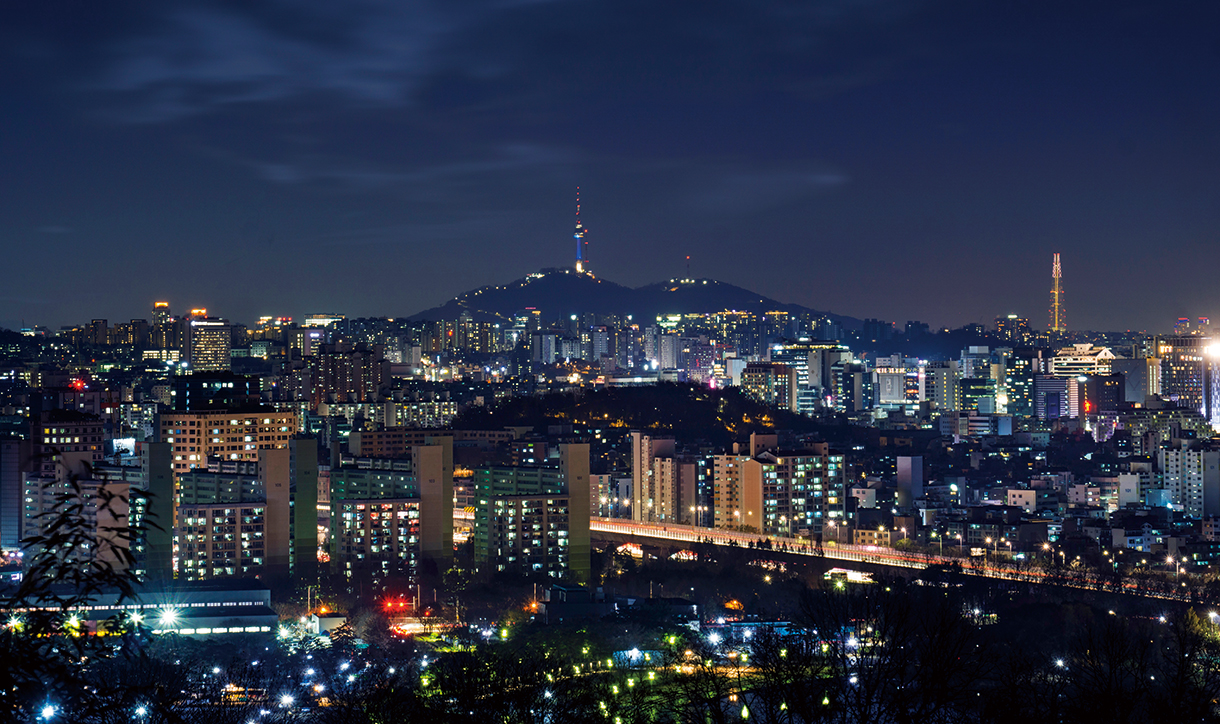

Story
세계적 도시 꿈꾸는 서울,
중요한 것은 삶의 질과 지속가능성
Elevating Seoul to a World-Class City:
A Focus on Quality of Life and Sustainability
도시대학원 도시ㆍ지역개발경영학과 구자훈 교수
Prof. Jahoon Koo, Department of Urban and Regional Development Management, Graduate School of Urban Studies
- 글 김현지
- 사진 손초원
- Writing Kim Hyun-ji
- Photograph Son Cho-won
Scroll Down
World-renowned cities such as New York, London, Paris, and Sydney share a common trait. They have a landscape, a vibe, and iconic architecture that come together when you hear their name. Consequently, a pertinent question arises: What steps must Seoul take to ascend to the ranks of world-class cities? Professor Jahoon Koo, an active participant in diverse projects, including his role as chairperson of the negotiation committee for the Jamsil Area International Exchange Complex in Seoul, provided valuable insights in addressing this question.
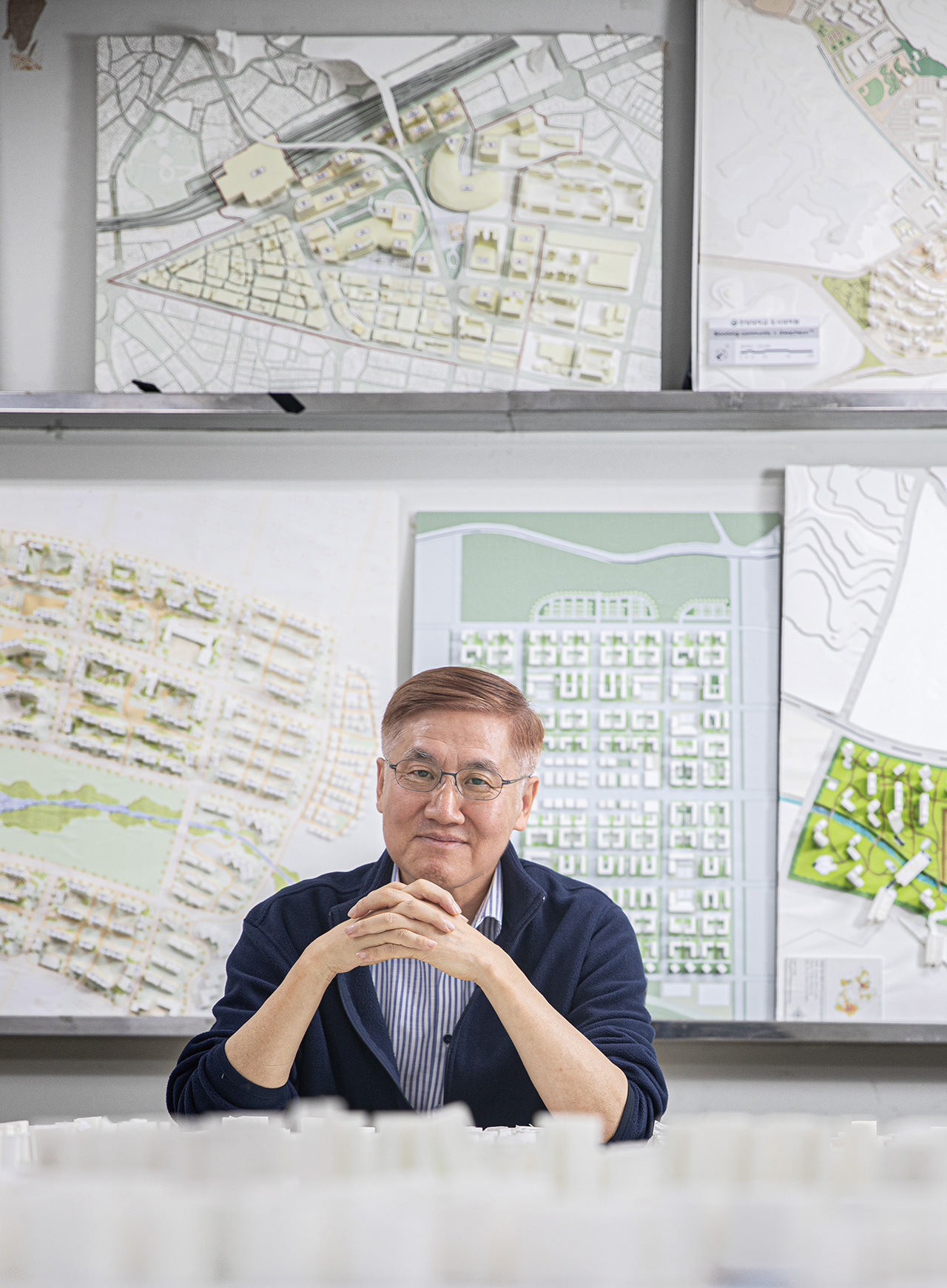
‘그레이트 한강 프로젝트’로 서울을 업그레이드?
서울시가 지난 3월 한강을 조금 더 접근하기 쉽고, 다양한 여가문화를 즐길 수 있는 공간으로 발전시키겠다는 계획을 밝혔다. 이른바 ‘그레이트 한강 프로젝트’다. 4개의 핵심전략과 55개의 선도사업을 바탕으로 한강 일원을 개발ㆍ재정비하겠다는 것이다.
“한강은 세계 어느 도시에서도 찾아볼 수 없는 거대하고 멋진 강입니다. 하지만 접근성이 떨어지고, 대부분의 강변이 시멘트 재질의 인공호안으로 조성돼 다소 삭막한 느낌이 있죠. 그동안 한강을 품은 공간들이 제대로 활용되지 못 한 게 사실입니다. 서울시의 그레이트 한강 프로젝트는 이런 한강의 잠재력을 최대로 끌어올리기 위한 종합계획이에요.”
구자훈 교수는 체계적인 개발ㆍ재정비 사업으로 한강의 활용도를 높이고, 궁극적으로 서울을 더 매력적인 도시로 업그레이드하는 게 이번 프로젝트의 핵심이라고 설명했다. 사실 기존에도 한강을 주제로 한 크고 작은 정부 사업은 있었다. 기존 사업들과 다른, 그레이트 한강 프로젝트만의 강점은 종합성에 있다. 기존에는 단일 시설물 사업이 주를 이뤘다면 이번 프로젝트는 한강 일원 전체를 개선해 시너지 효과를 내는 것, 시민의 삶과 연계하는 종합적인 발전에 초점이 맞춰졌다.
그레이트 한강 프로젝트의 핵심전략 첫 번째는 ‘자연과 공존하는 한강’이다. 말 그대로 한강의 자연성을 강화해 사람과 자연이 소통하는 환경을 만들겠다는 것이다. 이와 관련해 5개의 생태공원 재정비와 생태경관보전지역 확대, 자연형 호안 복원, 자연형 캠핑장 및 물놀이장 조성 등이 추진될 예정이다.
두 번째 전략 ‘이동이 편리한 한강’은 누구나 한강에 쉽게 접근할 수 있도록 연결성을 강화하겠다는 계획이다. 보행로와 수상ㆍ공중길 확충이 핵심이다. 녹지가 조성된 초록길, 입체보행교, 승강기, 나들목을 늘려 도심과 한강의 연결을 제고하고, 한강을 더 가까이에서 즐길 수 있는 보행잔교, 선셋브리지, 아트피어 조성 등이 추진된다. 공중곤돌라와 서울항 사업도 포함돼 있다.
세 번째 전략 ‘매력이 가득한 한강’은 미래 트렌드에 맞는 다양한 볼거리와 즐길 거리를 확충하는 것이다. 한강을 서울의 조망명소이자 문화ㆍ예술과 축제ㆍ행사의 중심지로 발전시킨다는 계획이다. 한강과 서울의 랜드마크를 표방하는 노들예술섬과 여의도 제2세종문화회관, 서울문화마당, 전망가든 조성, 다양한 축제ㆍ이벤트 개최 등이 포함된다.
네 번째 전략은 ‘활력을 더하는 한강’이다. 현재 한강 주변은 사유 공간인 주거지가 펼쳐져 있어 경관이 단조로울 수밖에 없다. 이를 재건축과 연계해 혁신하겠다는 게 골자다. 사유화된 한강변을 혁신하고, 한강변 성장 거점 지역의 토지이용계획을 개선해서 수변 중심의 멋진 도시 공간을 조성한다는 것이다. 스카이라인 다양화, 건물 디자인 특화, 국제복합교류지구 조성 등이 추진된다.
Upgrading Seoul with the Great Han River Project
Last March, the city of Seoul announced plans to transform the Han River into an even more accessible and vibrant space for leisure and cultural activities, to be known as the Great Han River Project. The initiative revolves around a comprehensive plan aimed at the development and restructuring of the Han River area, anchored by four core strategies and 55 flagship projects.
"The Han River stands as a vast and remarkable waterway unparalleled in any other global city. However, its accessibility is limited, with much of its riverside encased in artificial cement revetments, giving it a somewhat feeling of desolation. These spaces along the Han River have been underutilized. Seoul City's Great Han River Project constitutes a comprehensive strategy aimed at unlocking the full potential of this magnificent river."
Professor Jahoon Koo emphasized that the core of this project is to improve utilization of the Han River through systematic development, and ultimately upgrade Seoul into a more attractive city. In fact, there have been other large and small governmental projects on the Han River in the past. The strength of the Great Han River Project lies in its comprehensiveness. Whereas previous projects have focused on single facilities, the Great Han River Project focuses on improving the entire Han River area for synergistic effects, integrated and connected with the live of citizens.
The first core strategy within the framework of the Great Han River Project is the concept of “Han River that Coexists with Nature.” The primary goal is to fortify the river's inherent natural attributes, fostering an environment that promotes interaction between people and nature. To achieve this goal, the project entails the redesign of five ecological parks, the expansion of ecological landscape conservation zones, the restoration of natural lakeshores, and the establishment of natural camping sites and water parks.
The second strategy, known as “Easily-Accessible Han River,” aims to enhance connectivity to ensure that everyone can conveniently access the Han River. It involves expanding pedestrian paths, creating more green walkways, adding multi-level pedestrian bridges and elevators, and enhancing interchanges between the city center and the river.
Additionally, it includes projects like a pedestrian pier, sunset bridge, and art pier to bring people closer to the Han River. The strategy also encompasses initiatives such as an aerial gondola and the Seoul Port development.
The third strategy, “Attractive Han River,” aims to enhance attractions and entertainment in alignment with future trends. The goal is to transform the Han River into a focal point for culture, arts, festivals, and events in Seoul, making it a scenic destination. This strategy encompasses initiatives such as the Nodeul Art Island, the establishment of the 2nd Sejong Center for the Performing Arts in Yeouido, the development of Seoul Culture Plaza, the creation of an observation garden, and hosting diverse festivals and events.
The fourth strategy is “Invigorating Han River,” which addresses the current monotony of the Han River's landscape due to the widespread presence of private residential areas.
The aim is to introduce innovation through a connection with reconstruction efforts. The objective is to revitalize the privatized Han Riverside, enhance the land-use plans in the burgeoning Han River growth hub area, and cultivate a splendid urban environment centered on the waterfront. This involves diversifying the skyline, refining building designs, and establishing an international exchange complex district.
장기적 관점 필요한 도시경쟁력 강화와 혁신
“서울시의 구상안 발표 이후 서울링, 공중곤돌라, 서울항 등 일부분에만 초점을 맞춰 우려와 비판이 쏟아지기도 했습니다. 하지만 중요한 것은 프로젝트 전반에 관한 논의입니다. 대규모 시설물 부분은 장기적인 관점으로 충분한 사업타당성 검토와 의견 수렴을 거치면 해결될 일입니다. 서울을 한 단계 끌어올리는 데 한강이 큰 역할을 하리라 생각합니다.”
서울시는 한강사업추진단을 만들고 실제적인 프로젝트 추진에 나섰다. 더불어 도시경쟁력 강화의 일환으로 ‘도시ㆍ건축 디자인 혁신방안’을 발표하고 예술성과 상징성을 갖춘 공공건축물 조성에도 힘 쏟기로 했다. 선 디자인, 후 사업계획 방식의 행정 시스템을 도입해 선진 도시에 비해 부족한 건축물의 개성과 디자인적 창의성을 높인다는 방침이다. 구자훈 교수는 단기간에 성과를 과시할 수 있는 시설물 위주가 아니라 실제 시민의 일상을 개선할 수 있는 사업이 우선적으로 추진돼야 한다고 강조했다. 도시의 재생과 혁신은 장기적 관점과 혜안이 무엇보다 중요하다.
서울시보다 앞서 성공적으로 도시의 표정을 바꾼 곳들이 존재한다. 세계의 선진 도시들은 어떻게 도시경쟁력을 강화했을까.
“제조업 강국의 자리를 아시아에 내주고, 제조업 중심 산업이 지식 기반 산업으로 변모하면서 유럽 도시 곳곳에 자리했던 공장들이 버려지게 됐습니다. 공장들이 주로 강변에 위치한 까닭에 강을 품은 공간과 지역이 낙후되는 상황이 벌어졌죠. 영국 런던의 ‘밀레니엄 프로젝트’는 강변을 바꿔 도시 발전을 이뤄낸 성공 케이스 중 하나입니다.”
영국의 런던은 삶의 질적 향상과 도시 부활이라는 전제 아래, 템스강 수변 공간을 시민들을 위한 공간으로 탈바꿈시켰다. 산업의 변화로 20년간 버려져 있던 낡은 화력발전소를 현대 미술관으로 개조한 ‘테이트 모던’, 랜드마크가 된 ‘런던 아이’, 북쪽과 남쪽을 잇는 보행자 다리 ‘밀레니엄 브리지’, 재개발로 구축한 현대적인 주거단지 ‘그리니치 밀레니엄 빌리지’ 등이 관광명소이자 시민의 삶을 개선하는 공간으로 성공을 거뒀다.
구자훈 교수는 아일랜드의 수도 더블린도 리피강 주변을 글로벌 업무 복합단지로 바꾸는 데 성공해 크게 주목받았고, 2차 세계대전 이후 쇠퇴했던 독일의 함부르크 역시 ‘하펜시티 프로젝트’로 낙후된 항구를 변신시키며 도시 혁신을 이뤄냈다고 덧붙였다. 이와 함께 도시재생 프로젝트의 성공은 분명한 비전과 전략, 철학에 달렸다고 지적했다.
Strengthening Urban Competitiveness and Innovation from a Long-Term Perspective
Following the announcement of the Seoul Metropolitan Government's plans, concerns and criticism were primarily targeting specific aspects like the Seoul Ring, aerial gondola, and Seoul Port. However, it is vital to engage in comprehensive discourse about the project as a whole. The matter of large-scale facilities will be addressed through a rigorous business feasibility evaluation and extensive feedback process, considering the long-term outlook. I am confident that the Han River project will be instrumental in propelling Seoul to the next level as a global city.
Seoul has taken proactive steps toward realizing the Han River Project by establishing the Han River Project Promotion Team. Simultaneously, in a bid to bolster urban competitiveness, the city unveiled an urban- and architectural-design innovation plan, with a strong emphasis on imbuing public buildings with artistic and symbolic value. The strategy involves introducing an administrative approach that prioritizes design ahead of business planning to elevate the distinctiveness and design ingenuity of buildings, addressing a perceived gap compared to more advanced cities. Professor Koo underscored the need to prioritize projects that enhance residents' daily lives tangibly, rather than facilities improvement for immediate results. In the realms of urban regeneration and innovation, he emphasized the importance of a long-term perspective and insightful strategies.
Other cities around the world have successfully revitalized their urban landscapes.
So, what strategies did these advanced cities employ to enhance their urban competitiveness?
“As the global manufacturing powerhouse shifted to Asia and manufacturing-oriented industries transformed into knowledge-based industries, factories located throughout European cities were abandoned. Since these factories were primarily situated along rivers, the areas adjacent to these waterways remained undeveloped. The UK's Millennium Project in London serves as a successful example of urban development achieved by transforming the riverside.”
The UK embarked on a transformation of the Thames waterfront with the goal of enhancing people's quality of life and revitalizing London for its residents and visitors.
Notable achievements include Tate Modern, a conversion of a disused thermal power plant into a modern art museum; the iconic London Eye; the construction of the Millennium Bridge linking the north and south for pedestrians; modern residential complexes through redevelopment efforts; and Greenwich Millennium Village. These spaces emerged as tourist attractions and spaces that enhanced the daily lives of the city's residents.
Dublin, the capital city of Ireland, gained widespread acclaim for its effective transformation of the River Liffey area into a thriving global business complex. Similarly, Hamburg, Germany, which faced decline post-World War II, achieved urban revitalization through the HafenCity Project, reinvigorating an underdeveloped port. Professor Koo emphasized that the triumph of an urban regeneration project hinges on a well-defined vision, a strategic approach, and a cohesive philosophy.
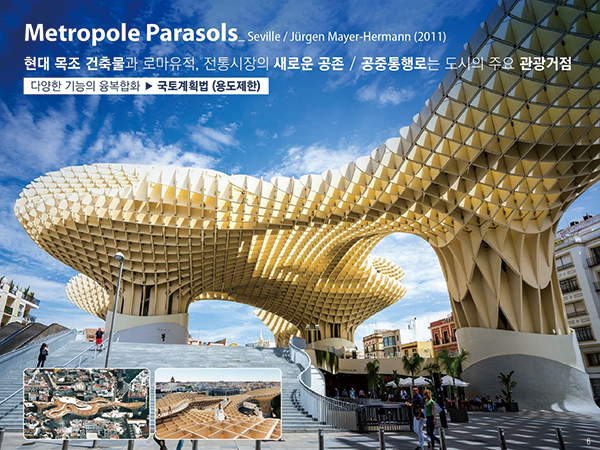
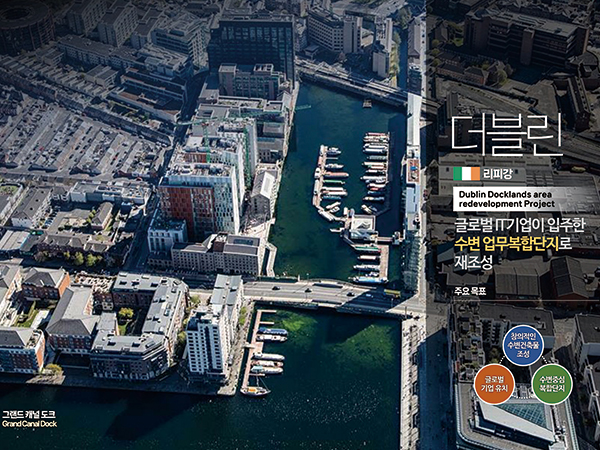
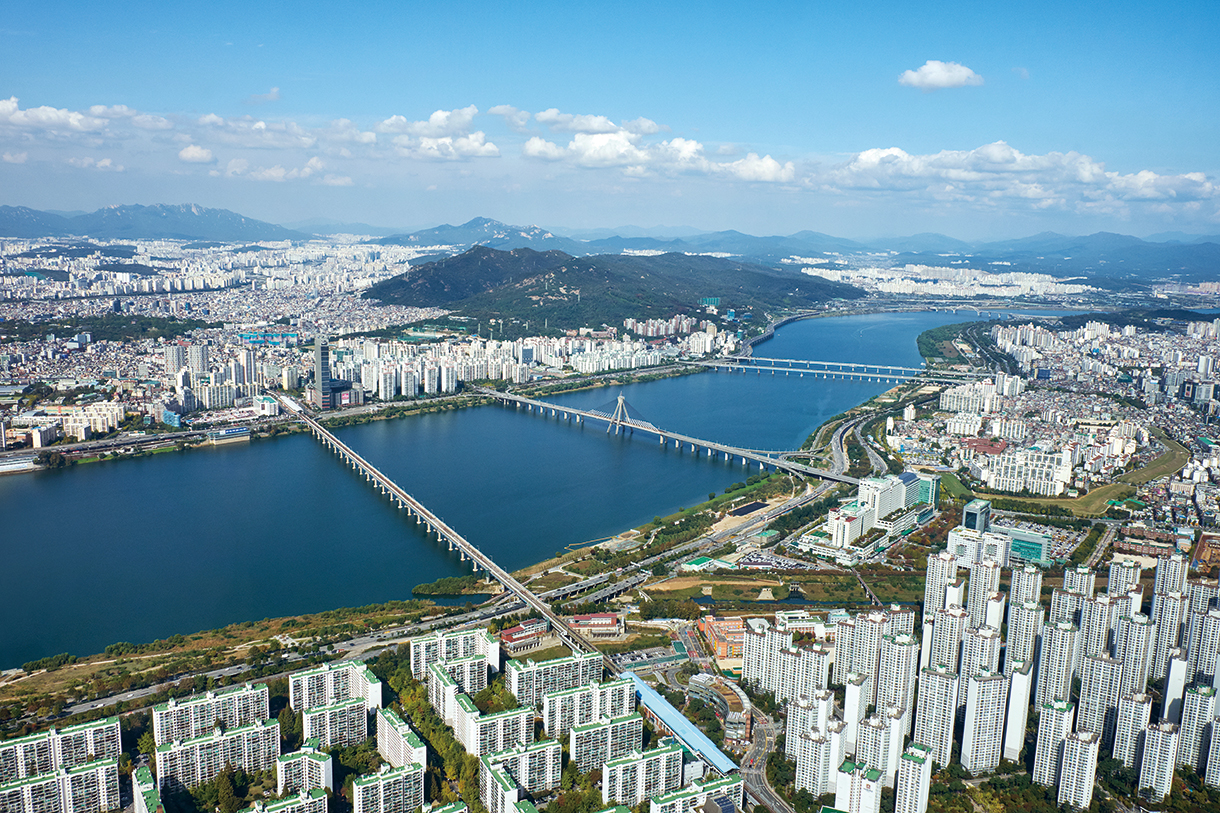
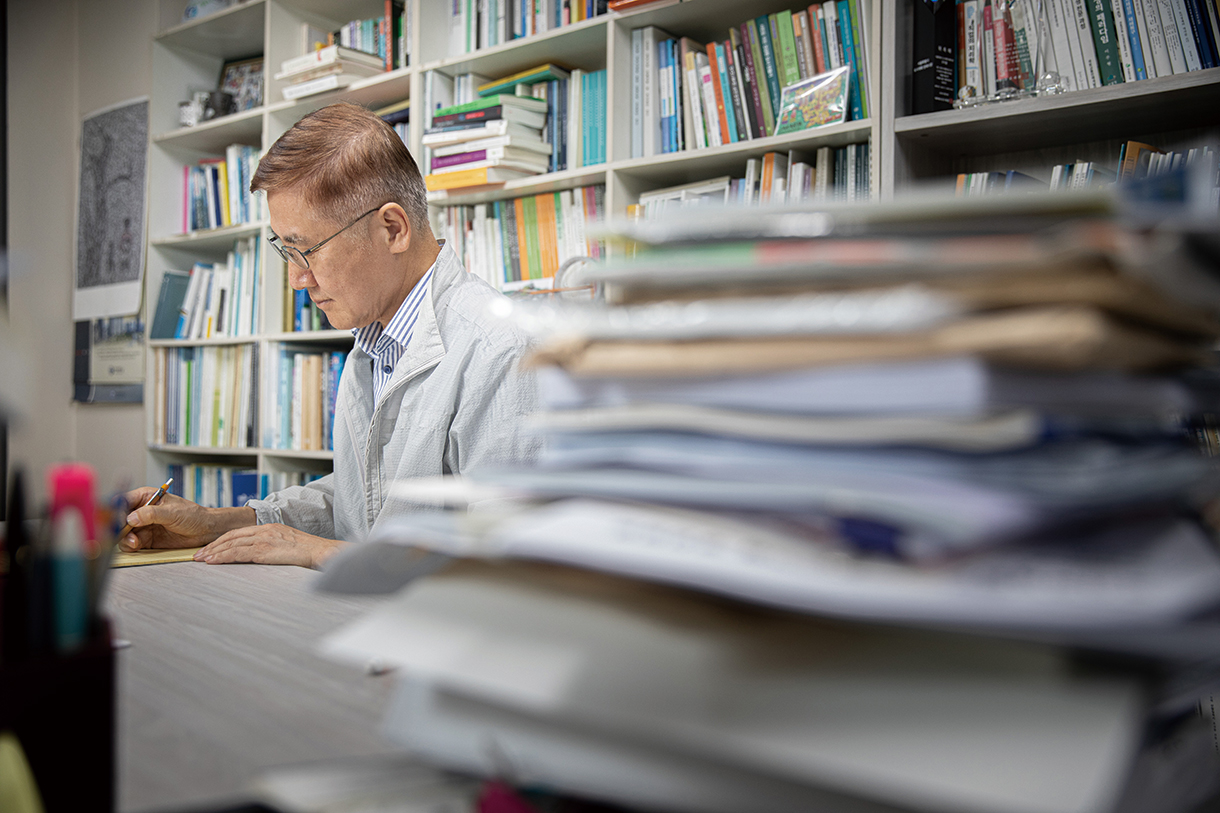
세계적인 도시를 만들기 위해서는 미래 세대와 지속가능 발전을 중심에 둬야 한다. 좋은 환경을 구축하면 좋은 사람이 모이고, 사람이 모이면 우수한 산업이 자리 잡게 된다
To craft a world-class city, our primary focus must revolve around future generations and sustainable development. By establishing a favorable environment, we will naturally attract quality individuals — and when quality people join forces, outstanding industries thrive.
도시경쟁력, 도시 발전의 진정한 의미는?
1960년 245만 명이었던 서울시의 인구는 1990년대 초 1,061만 명으로 4.3배 증가했고, 최근 들어서는 941만 명 수준으로 다소 감소했다. 1인당 국민소득은 2000년 11,347달러에서 2022년 32,600달러로 3배가량 높아졌다. 서울의 인구 과밀화 양상이 변화하고 소득 수준 증가에 따라 삶의 질 역시 달라졌음을 짐작하게 한다.
“도시는 살아있는 생명체와 같습니다. 도시에 대한 시민의 요구는 시대에 따라 계속 변화할 수밖에 없습니다. 도시계획도 새로운 시대적 역할과 과제에 맞춰 지속적으로 발전해야 하죠. 도시계획은 해외의 성공 사례를 무조건 따라 하는 것이 아니라 그 도시만의 특성과 역사, 시민의 삶을 반영해야 합니다.”
구자훈 교수는 평가기관마다 다른 도시지표 순위에 집착하지 말고, 우리에게 맞는 발전 방안을 모색해야 한다고 강조했다. 삶을 개선하고 젊은 세대가 모일 수 있는 양질의 도시문화를 키우며, 첨단산업과 금융, 미디어 등 다양한 분야의 기업 입지를 쉽게 해야 한다. 교육과 예술, 의료서비스를 지속적으로 개선하고 여러 주거 형태를 고려한 공급도 이뤄져야 한다.
“최근 세계에는 승자독식 도시화가 일어나고 있습니다. 가장 발전한 도시로 모든 산업과 가능성, 미래 세대가 모이는 거죠. 세계적인 도시를 만들기 위해서는 미래 세대와 지속가능 발전을 중심에 둬야 합니다. 좋은 환경을 구축하면 좋은 사람이 모이고, 사람이 모이면 우수한 산업이 자리 잡게 됩니다. 우리 도시의 경쟁력도 이렇게 키워야 합니다.”
구자훈 교수는 민-관-학이 어우러지며 도시 발전을 모색해야 한다고 말했다. 더불어 도시ㆍ건축 분야를 전공하는 한양인들이 종합적인 관점으로 도시 정책을 바라보길 바란다고 전했다. 사회 시스템 및 경제 변화, 삶의 가치에 관심을 기울이고 지켜볼 때 우리가 살아가는 도시의 미래를 올바로 만들어갈 기회가 주어질 것이다.
What is the True Meaning of Urban Competitiveness and Urban Development?
The population of Seoul, which was 2.45 million in 1960, increased 4.3-fold to 10.61 million in the early 1990s, and recently decreased slightly to 9.41 million. Per capita national income nearly tripled from US$11,347 in 2000 to US$32,600 in 2022. This suggests that the quality of life has also improved as Seoul's overpopulation pattern has changed and income levels have increased.
“Cities are like living creatures. Residents' expectations of cities are bound to continue to change with the times. Urban planning, in turn, must adapt to align with the roles and challenges of the new era. It is thus imperative that urban planning avoids blindly emulating overseas success stories and instead incorporates the unique attributes, history, and daily lives of the city's residents.”
Professor Jahoon Koo emphasized the need to prioritize our development plans rather than fixating on city rankings that vary among different evaluation agencies. These plans should target improved quality of life, a vibrant urban culture for the younger generation, and a business-friendly environment. We should also continue to enhance education, arts, medical services, and housing options.
"In recent times, we have witnessed a trend of winner-takes-all urbanization worldwide. The most advanced cities are those where various industries, opportunities, and the prospects for future generations converge. To craft a world-class city, our primary focus should revolve around future generations and sustainable development. By establishing a favorable environment, we will naturally attract quality individuals, and when quality people join forces, outstanding industries thrive. This is how we can enhance our city's competitiveness."
Professor Koo emphasized the necessity of collaboration among the public, private, and academic sectors for urban development. He also expressed the hope that students majoring in urban and architecture fields at Hanyang University will adopt a comprehensive approach when examining urban policies. By keeping a vigilant eye on shifts in the social system, economy, and the quality of life, we can seize the opportunity to shape the future of our city effectively.
